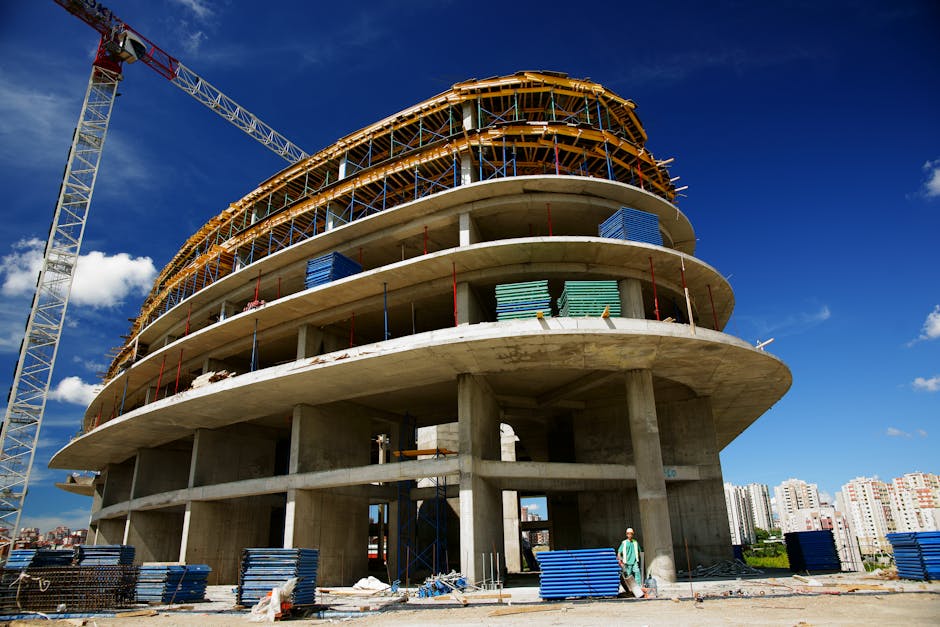The Role of Sustainable Materials in High-End Renovations
Importance of sustainable materials in renovations
Using sustainable materials in renovations is essential for reducing the environmental impact of construction projects. Sustainable materials are sourced from renewable and eco-friendly sources, helping to conserve natural resources. They also contribute to better indoor air quality and lower energy consumption in buildings. By choosing sustainable materials, you can create high-end renovations that not only look great but also demonstrate a commitment to environmental responsibility.

Advantages of using sustainable materials in high-end renovations
Sustainable materials offer numerous advantages in high-end renovations. They are environmentally friendly and can help reduce your carbon footprint. Using sustainable materials can also improve indoor air quality, as they often contain fewer harmful chemicals. Additionally, sustainable materials are durable and can contribute to the long-term value of your property. Finally, incorporating sustainable materials can lead to cost savings on energy bills, as they are often more energy-efficient.
Types of sustainable materials for high-end renovations
Sustainable materials for high-end renovations can include reclaimed wood, bamboo, cork, and recycled metal. These materials are sought after for their eco-friendly benefits and unique aesthetic appeal. Reclaimed wood, for example, is salvaged from old structures and can offer a rustic yet sophisticated look to your renovation project. Similarly, bamboo is known for its durability and rapid renewal cycle, making it a popular choice for flooring and cabinetry. Cork offers a soft, comfortable surface and is harvested without damaging the tree. As for recycled metal, it can be used in various architectural elements to add a modern and industrial touch to the renovation.
Incorporating sustainable materials in design and aesthetics
Sustainable materials are an essential aspect of high-end renovations. They contribute to environmental conservation and reduce the overall impact on the planet. Designers and architects are increasingly incorporating sustainable materials such as reclaimed wood, bamboo, recycled glass, and low-VOC paints into their projects to create aesthetically pleasing and eco-friendly spaces. In addition to promoting sustainability, these materials also add a unique and contemporary touch to the overall design, enhancing the appeal of the renovated space.
Economic and environmental impact of sustainable materials
Sustainable materials used in high-end renovations have a positive economic and environmental impact. According to research, using sustainable materials can reduce energy consumption, leading to lower utility bills and a smaller carbon footprint. Additionally, these materials can be recycled, reducing waste and contributing to a more environmentally friendly construction process. When considering the economic and environmental impact of sustainable materials, it is clear that incorporating them into high-end renovations can lead to long-term cost savings and a more sustainable future.
Case studies of successful high-end renovations using sustainable materials
In Miami, a high-end residential building was renovated using sustainable materials such as reclaimed wood, recycled glass, and energy-efficient lighting. The renovation aimed to achieve LEED certification, which measures a building’s environmental performance. In another case, a historic mansion in New York City was restored using sustainable materials like bamboo flooring, low-VOC paints, and salvaged bricks. As a result, the mansion’s energy consumption decreased significantly, and its value increased. These case studies illustrate how high-end renovations can successfully incorporate sustainable materials, resulting in both environmental and financial benefits.
Challenges and limitations of using sustainable materials in high-end renovations
Sustainable materials offer the promise of environmental responsibility and a reduced carbon footprint in high-end renovations. However, their use comes with certain challenges and limitations. Some of these include the limited availability and higher cost of sustainable materials compared to conventional options, as well as the potential difficulty in sourcing specific sustainable materials that meet the design and quality standards required for high-end renovations. Additionally, the need for specialized expertise in working with sustainable materials can pose a challenge, potentially leading to increased labor costs. Despite these challenges, the growing demand for sustainable options is driving innovation in the industry, and as technology advances, more sustainable materials may become more accessible and cost-effective for high-end projects.
Choosing the right sustainable materials for your renovation project
Sustainable materials are an essential choice for renovation projects as they are eco-friendly and contribute to a healthier environment. When selecting sustainable materials, it’s important to consider their durability, recyclability, and impact on the environment. Look for materials that are certified as sustainable, such as reclaimed wood, bamboo, cork, and recycled glass. These materials not only add a stylish touch to your renovation but also reduce the carbon footprint of your project. Moreover, choosing sustainable materials can lead to long-term cost savings and contribute to a more sustainable future.
Working with contractors and suppliers for sustainable materials
When working with contractors and suppliers for sustainable materials, it’s essential to communicate your priorities clearly. Make sure to emphasize the importance of using eco-friendly materials and ask about the options they have available. Additionally, inquire about their experience with sustainable materials and any certifications they may have. Collaborating with like-minded professionals can ensure that your high-end renovation project aligns with your sustainability goals.
Conclusion: Creating luxurious, sustainable spaces with high-end renovations
When considering high-end renovations, it’s essential to prioritize sustainable materials to create luxurious and eco-friendly spaces. Incorporating sustainable materials not only adds a touch of elegance but also contributes to a greener environment. By using sustainable materials in high-end renovations, you can achieve a balance between luxury and environmental responsibility. Choosing materials with a focus on sustainability allows for the creation of opulent living spaces while reducing the carbon footprint of the renovation project.











